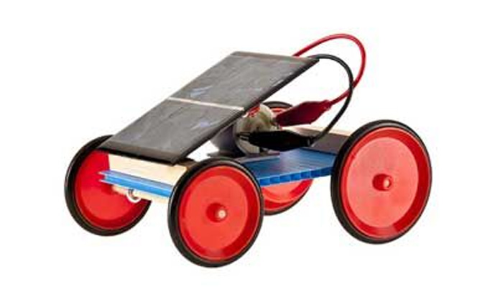Live
- Kanguva’s Box Office Disaster: Is This the End of Suriya’s Mega Hit?
- Maoist killed, jawan injured in encounter
- Kerala Police Officer Brutally Murdered By Estranged Husband In Tragic Domestic Violence Case
- Pallishree Mela records good sales at Bali Jatra
- Kharif paddy purchase begins in Bargarh
- Faeces forced into tribal woman’s mouth
- Hyderabad's Air Quality Worsens as Winter Settles In | AQI Levels Reach Moderate Range
- Dead' Man Wakes Up En Route To Cremation In Rajasthan; Three Doctors Suspended
- Odisha to study root causes for migration of labourers
- Forest officials accountable for wildlife deaths: Minister
Just In

Choose a material for the car body, which is called the chassis Think carefully about this you want something strong, but also something lightweight so it needs less power for the motor to move it But be careful if its too light, it can easily get blown about by the wind A big part of engineering is finding the right balance between weight and strength
Choose a material for the car body, which is called the chassis. Think carefully about this: you want something strong, but also something lightweight so it needs less power for the motor to move it. (But be careful — if it’s too light, it can easily get blown about by the wind.) A big part of engineering is finding the right balance between weight and strength.
Use a nail to poke a small hole in the center of your wheels. Make sure the stiff wire or wooden skewers you use for axles fit in the holes tightly. Take an extra cap and cut off the sides, leaving just the top part, which usually has a small inner rim to help keep the bottle from leaking. Glue this cap to one of your wheels.
You have just created a pulley for your driving wheel; the inner rim of the extra bottle cap will support your car’s drive belt. (You can try using a film canister cap for this step instead of cutting a bottle cap. If you are using toy wheels like K’nex, you can just use a smaller wheel mounted on the inside of your main wheel to act as the pulley.)
Now, mount your axles onto the chassis. Depending on what your chassis is made of, you can thread the axle through eye screws mounted on the bottom. Another easy method is to tape straws on the underside of the chassis and thread the axles through them. (Use our balloon rocket car project as reference for how to do this.)
Attach the small motor pulley to the motor shaft. Determine where to mount the motor by connecting the driving pulley with the motor pulley using an elastic band as a drive belt. Position the motor so the band is slightly stretched (but don’t stretch it too much!). Mount the motor with glue or tape it in between a small frame of wood or cardboard blocks.
Use clear plastic tape to attach the two solar cells together side-by-side; then connect them in a series circuit using the alligator clip leads. Connect the positive terminal of one cell to the negative terminal of the other. Connect the remaining terminals to the motor. If the motor spins the wrong way, switch the leads where they connect to the motor. Once it’s connected properly, you’ll probably want to use to tape to help keep the wires under control.
Mount the solar cells on the chassis at an angle where they will receive the most sun. Take your car outside to a sunny sidewalk, connect the drive belt, and watch it go!
Designing and building a car from scratch involves a lot of perseverance and trial and error, so don’t be discouraged if yours doesn’t work perfectly right away. Experiment to see if you can improve the design of your solar car. How fast does it go? Does it drive straight? How would it perform with only one solar cell? What if you used smoother wheels for less friction? Keep testing new ideas to make your car work better.
Once you’ve perfected your car, think about other ways you could experiment with solar power. Could you build a solar boat or water pump? Could you perform electrolysis to divide water into hydrogen and oxygen using a solar panel? How can we harness the amazing power of the sun? Maybe you’ll be the next scientist to help find out!

© 2024 Hyderabad Media House Limited/The Hans India. All rights reserved. Powered by hocalwire.com







